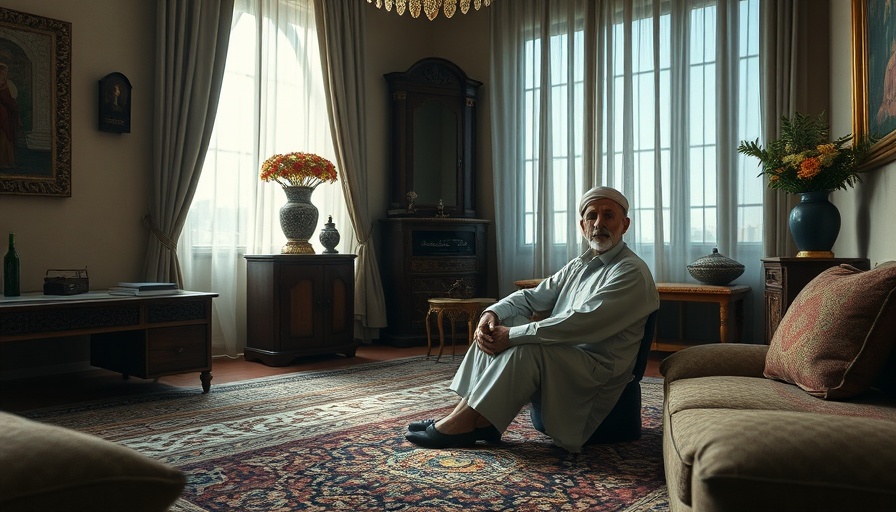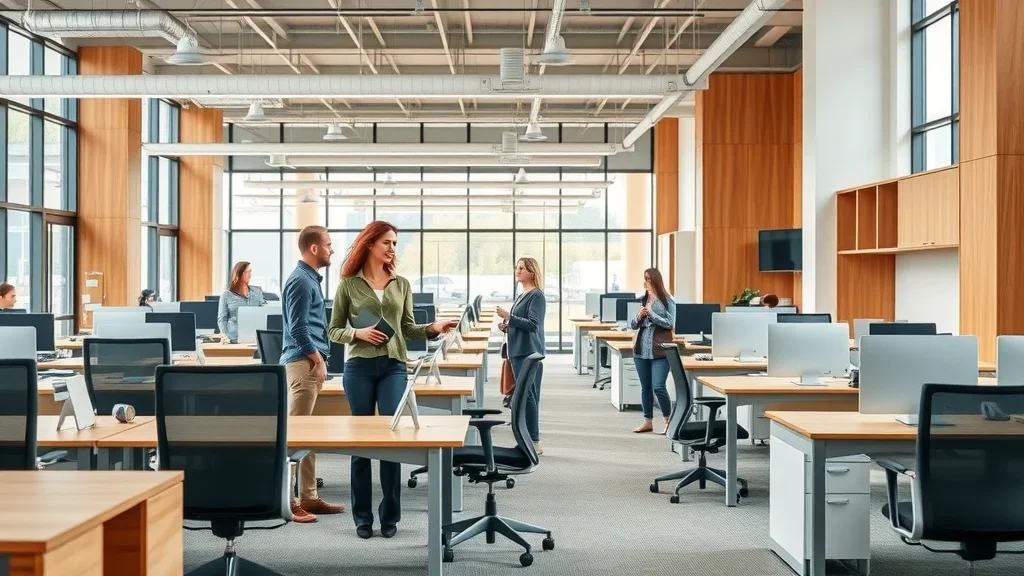Imagine outfitting your entire office while saving as much as 70% compared to buying new furnishings. Used office furniture in Avon, CT offers a breakthrough opportunity for local businesses to blend style, sustainability, and significant cost savings. In a world of rising prices, finding high-quality, affordable business furniture is a game-changer—especially for small companies and startups eager to maximize every dollar. If you’re ready to upgrade your workspace without breaking the bank, our comprehensive guide will show you how to secure the best deals, select premium pieces, and transform your office into a professional, productive environment for less.Unlocking Value: Why Used Office Furniture Avon CT Is a Smart Choice"Did you know that businesses can save up to 70% by choosing used office furniture? Embracing sustainable, affordable options is a game-changer for small companies looking to optimize their budgets."In Avon, CT, companies of all sizes are discovering the advantages of buying used office furniture. The furniture outlet market now offers gently used home office, living room, and dining room furnishings, allowing businesses to create versatile workspaces at a fraction of the price. Purchasing pre-owned desks, chairs, and cubicles not only conserves financial resources but also supports a greener, more sustainable business model—a true win for your bottom line and the planet.Environmental benefits of buying used: Reduce waste and lower your carbon footprint by giving quality furniture another life.Immediate availability and fast delivery: Skip long manufacturing lead times—used office furniture is ready immediately from local showrooms in Avon, CT.Premium brands for less in Avon, CT: Access top-tier desks and ergonomic chairs at a fraction of retail price, making value a top priority for your business. What You'll Learn from This Guide to Used Office Furniture Avon CTNavigating the used office furniture Avon CT market can feel overwhelming, but this guide is designed to make it easy to create a stylish and efficient space without overspending. We'll break down the most vital considerations so you can shop with confidence and clarity, whether you're seeking a modern home office upgrade, reimagining your business lounge with comfy living room pieces, or looking for sturdy meeting tables adapted from dining room sets. Unlock insider information on finding exclusive offers in your area, and leverage our actionable steps to secure lasting value for your workspace.Key factors to consider when shopping for used office furniture in Avon, CTOverview of popular living room and dining room furniture options transformed for office useExclusive deals currently available near youUnderstanding the Local Market: Used Office Furniture Avon CT OptionsThe used office furniture market in Avon, CT is vibrant and ever-evolving, offering a diverse selection to meet any professional need. Local businesses and home offices alike can benefit from the practical advantages of shopping at a trusted furniture outlet near Avon. These outlets stock a dynamic assortment of room furniture, living room sets, and home office essentials that blend seamlessly into workspaces, thanks to their durability and style. By prioritizing quality and customer service, the best showrooms in the region deliver lasting value, making it easy to create a functional, personalized office environment. Whether your project is large or small, you can find flexible solutions and even discount office solutions tailored to your goals.The Leading Furniture Outlet for Office EssentialsWhen searching for used office furniture in Avon, CT, a top-rated furniture outlet offers the widest selection and the most expert support for transforming your workspace. Here, knowledgeable staff members guide you through available inventory, helping you choose the best pieces for your layout and business objectives. Showrooms typically feature rotating collections of gently used desks, storage cabinets, ergonomic seating, and stylish accessories or a power base for electronics—giving you both quality and cost savings in one stop. Many outlets—including those serving Avon neighborhoods—run ongoing promotions and also offer personalized delivery and installation to make it easy to create your dream space in record time. Popular Room Furniture Types Sought by BusinessesBusinesses today are getting creative by incorporating living room and dining room furniture into their office landscapes. Plush armchairs, sleek side tables, and large dining sets can be seamlessly adapted for meeting rooms, breakout areas, or reception lounges. This trend improves comfort, encourages informal collaboration, and brings a welcoming atmosphere into traditionally rigid workspaces. Additionally, home office staples—such as sit-stand desks, executive chairs, and filing solutions—are always in demand for professionals who value both function and style. If you’re seeking a workspace that stands apart from the typical cubicle farm, start by browsing this new generation of room furniture best sellers.Home Office Setups: Blending Comfort With ProductivityThe rise of remote and hybrid work arrangements has made the home office a focal point for professionals in Avon, CT. Used furniture outlets now offer an impressive spectrum of home office options, from compact desks tailored for apartments to executive chairs that deliver day-long comfort. Many turn to living room features such as additional seating, bookcases, and accent tables to personalize and organize their workspace, creating a productive yet inviting environment. Adapted dining tables serve as collaborative hot spots, while expert guidance ensures that ergonomic standards, aesthetics, and space considerations are all addressed for maximum satisfaction.Comparison of Used Office Furniture Types Available in Avon CTFurniture TypeCommon UsesTypical FeaturesApproximate SavingsDesks & TablesMain workspace, conferences, collaborative areasWood/metal, adjustable heights, built-in cable management40-70%Seating (Chairs/Armchairs)Workstations, meeting rooms, loungesErgonomic, swivel, lumbar support, designer styles35-65%StorageFile organization, supply closetsDrawers, locking cabinets, rolling units30-60%Living & Dining Room PiecesBreakout zones, casual meeting areasCouches, side tables, large tables for group work45-75%AccessoriesPersonalizing workspaceLamps, throw pillows, organizers20-55%Top Benefits of Buying Used Office Furniture Avon CTThe financial appeal of used office furniture in Avon, CT is impossible to ignore—especially for businesses with tight budgets or those seeking to minimize upfront investment. Purchasing gently used pieces ensures you gain quick access to premium furniture at a significant discount, supporting both agility and innovation. Beyond the savings, there’s an increasing appreciation for eco-conscious practices; buying used diverts furniture from landfills, helping to protect the environment and reduce waste.Cost savings for startups and established businessesSustainable, eco-friendly choicesSwift purchase and set-up timelines"Selecting used office furniture isn't just practical—it's a smart investment in your business's financial health and environmental responsibility." — Discount Office Solutions RepresentativeMoreover, many local outlets pride themselves on curated collections and attentive customer service—sometimes providing flexible financing, ensuring all your needs are met in one place. Quick turnarounds and the ability to make it easy for customers have earned these shops rave reviews across the United States and specifically among the professional communities of Avon, CT.How to Choose High-Quality Used Office Furniture Avon CTSelecting the best used office furniture in Avon, CT requires a careful approach to ensure both value and durability. Begin with a quality checklist: examine materials, joints, and finishes for signs of wear. Test adjustable chair mechanisms and desk hardware for function and stability—a key for home office furniture that sees daily use. Always clarify warranties and return policies to protect your investment, and ask about delivery or installation services for peace of mind. Creative offices may wish to mix and match living room and dining room pieces, producing flexible zones for work, brainstorming, and relaxation while maximizing available space and budget.Checklist for evaluating gently used desks and seatingUnderstanding warranties and return policiesTips on mixing and matching living room and dining room pieces for creative office designs Featured Deals: Used Office Furniture Avon CT Must-See OffersAvon, CT is home to exceptional deals you won’t want to miss. Local stores frequently feature current specials, discounted sets, and limited-time offers on gently used room furniture, perfect for revitalizing your business environment. From home office accessories to dining sets repurposed for meetings, shoppers can save even more by tapping into seasonal sale events and exclusive promotions. Whether you’re upgrading an entire office or simply adding finishing touches, Avon’s best outlets provide both quality and affordability at your fingertips.Current Specials and Promotions Near YouWatching for seasonal promos and local deals is one of the best strategies for maximizing your office refresh. Many furniture outlets near Avon advertise offers such as percentage-off discounts, bundle savings, or free assembly and delivery services. By subscribing to store newsletters or following favorite outlets online, you can get early access to new arrivals and flash sales—helping you lock in the best prices on living room, dining room, and home office essentials. Don’t hesitate to ask about package deals for larger purchases or about added value options like throw pillows and floor mats to complete your new workspace.Living Room & Dining Room Furniture Adapted for Office UseWhy limit your choices to purely traditional office furniture? Many of Avon’s top business environments now feature refurbished living room and dining room pieces as part of their setup, creating hybrid spaces that welcome collaboration, idea sharing, and informal meetings. Dining tables become dynamic group workstations or conference hubs, while sturdy sideboards and couches transform otherwise unused corners into productive zones. Look for coordinated sets and unique finds when browsing room best sellers to make your office stand out—leave a lasting impression and boost team morale along the way.Latest Deals and Seasonal Discounts on Used Office FurnitureDealFurniture TypeDiscountPromotion EndsBundle Buy: Desk + ChairHome OfficeSave up to 60%April 30Breakout Lounge SpecialLiving RoomSave 50%OngoingTeam Table BlowoutDining Room SetsUp to 70% offMay 10Bulk Deals for StartupsMixed Room FurnitureAdd an extra 15% off for orders over $1,000Limited time Step-by-Step: How to Shop for Used Office Furniture Avon CTTransforming your office can be fun and straightforward with a strategic approach. Here’s a streamlined path to finding your ideal used office furniture in Avon, CT:Assess your office needs and space: Measure your workspace. Decide what types of room furniture (desks, chairs, storage, collaborative spaces) are priorities.Browse reliable furniture outlets in Avon, CT: Use reviews and word-of-mouth to select a store with great service and excellent selection.Visit showrooms or shop online: In-person browsing lets you test comfort and quality—many outlets also make it easy to browse a full inventory from home.Inspect furniture condition and function: Look for gently used, well-maintained items. Ask questions about history and check all moving parts.Finalize your purchase and schedule delivery: Confirm all terms and conditions, warranty info, and arrange for delivery or in-store pickup.Success Story: Furnishing an Avon CT Office Space on a Budget"We outfitted our workspace with used office furniture from Discount Office Solutions and saved thousands—without sacrificing style or quality!"Small businesses throughout Avon, CT are diving into Discount Office Solutions to complete office renovations under budget. One memorable client faced a significant obstacle: delivering a modern, comfortable space without overspending. By working with a reputable furniture store, they mixed living room and dining room pieces—think plush couches for casual meetings and sturdy dining sets repurposed as collaborative work zones. The result was a professional, stylish workspace that made it easy to work, collaborate, and impress clients every day.Client’s challenge: Limited renovation budgetSolution: A Mix of room furniture adapted for businessResult: A professional, affordable workspace People Also Ask: Your Used Office Furniture Avon CT Questions AnsweredWhat should I look for when buying used office furniture in Avon, CT?When buying used office furniture in Avon, CT, inspect every piece for structural integrity, stable movement, and overall cleanliness. Ask about the age, warranty, and prior use of each item. Confirm whether your purchase can be returned or exchanged if it doesn’t meet expectations. Choosing a reputable furniture outlet ensures that expert answers are always available, making it easy to find furnishings that will stand the test of time in a busy office.Can I use living room or dining room furniture in my professional office?Absolutely! Many businesses innovate by blending living room sofas or dining room tables with task desks to encourage creativity and offer flexible spaces for teamwork and relaxation. Just make sure the furniture fits your workflow and is sturdy enough for commercial use.Are there bulk buying discounts for used office furniture near Avon, CT?Yes, several leading furniture outlets near Avon offer additional discounts for bulk purchases or comprehensive office packages. These deals can bring even more value to your renovation, with some stores offering free delivery or assembly for large orders. Experience the quality and variety offered at Discount Office Solutions with this showroom walkthrough. See first-hand how used office furniture can upgrade your Avon, CT space for less.Frequently Asked Questions: Used Office Furniture Avon CTHow can I ensure used office furniture meets my quality expectations?Always inspect for wear, test moving parts, and buy from trusted outlets. Ask about guarantees and return policies to safeguard your purchase.What types of home office furniture are available as used options?Avon stores offer desks, executive seating, bookshelves, and storage designed for both home and traditional office spaces at discounted rates.Are there bulk purchase savings available?Yes, many outlets offer extra discounts or perks for bulk and package deals—perfect for outfitting a new or growing office affordably.Can I view furniture in person before buying?Absolutely, schedule a showroom visit or request a virtual tour to personally vet the furniture options before making a purchase.Key Takeaways When Shopping for Used Office Furniture Avon CTUsed office furniture in Avon, CT delivers exceptional value and styleSelection ranges from room furniture basics to specialty itemsPartner with local experts like Discount Office Solutions for the best resultsReady for Savings? Find Your Used Office Furniture Avon CT TodayWhy overspend when the best deals are already here? With office furniture prices climbing, you can save big by choosing high-quality used office furniture. Call Discount Office Solutions at 860-390-2481 or visit our website https://www.evolvemyoffice.com today!Conclusion: Used office furniture in Avon, CT lets you furnish smart, stylish, and sustainable workspaces for less—connect with local experts now for the best value!I

 Add Row
Add Row  Add
Add 




Write A Comment